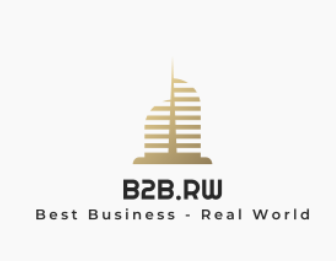
Ensuring Inclusivity: The Role of Accessibility Compliance Tools




Introduction to Accessibility Compliance Tools
Accessibility Compliance Tools are essential solutions designed to facilitate Content Management Systems (CMS) in achieving compliance with established legal and ethical standards surrounding web accessibility. These tools focus on ensuring that websites are usable for individuals with various disabilities, which may include, but are not limited to, visual impairments (blindness and low vision), auditory limitations (deafness and hearing loss), mobility challenges (difficulty with motor functions), and cognitive differences (such as dyslexia or autism). In the current era, where digital engagement is ubiquitous, the significance of accessibility compliance cannot be overstated. Organizations are increasingly recognizing that ensuring accessibility is not merely a technical obligation but a fundamental aspect of user experience that has profound implications for society.
Accessibility compliance is crucial for adhering to a range of legal guidelines such as the Americans with Disabilities Act (ADA) and Section 508 of the Rehabilitation Act in the United States. These laws protect the rights of individuals with disabilities regarding access to information and technology, thereby creating an equitable digital landscape. Globally, similar regulations and frameworks exist, pushing organizations to adopt a proactive stance in ensuring that their digital offerings are compliant. The push towards accessibility is more than just compliance; it represents a significant cultural shift toward inclusivity and social responsibility.
As organizations evolve into a digitally driven era, understanding the parameters of accessibility becomes essential. The availability of accessibility compliance tools means that many organizations no longer have to navigate this complex landscape alone, allowing them to deliver a high-quality user experience while simultaneously fulfilling their legal obligations.




Noteworthy Considerations on Accessibility Compliance Tools
Economic Perspective
From an economic standpoint, integrating Accessibility Compliance Tools can produce significant financial benefits while minimizing liabilities. The potential for cost savings lies mainly in preventing lawsuits and regulatory penalties that can arise from non-compliance. Legal actions concerning accessibility can be costly. For instance, the cost of litigation, settlement, and damages can range from thousands to millions of dollars, depending on the case. On the other hand, investing in accessibility compliance tools can cost-effectively safeguard against these risks.
Moreover, companies that prioritize digital accessibility can tap into a vast market segment that is often overlooked. Approximately 15% of the world's population lives with some form of disability, representing a significant consumer base with considerable purchasing powerestimated to be over $490 billion in disposable income. By creating an inclusive digital experience, businesses have the potential to expand their market reach, attract new customers, and generate additional revenue streams. This not only fosters inclusivity but also strengthens the companys market positioning within a competitive landscape.
Furthermore, investment in accessibility tools can yield enhanced user engagement. Research shows that accessible websites often experience higher visitor retention rates, improved conversion rates, and greater customer loyalty. All these factors contribute to a solid return on investment (ROI), reaffirming that accessibility is not only a legal requirement but also a smart business practice.
Legal Perspective
From a legal perspective, the increasing number of lawsuits and regulatory investigations surrounding digital accessibility highlights the urgency for organizations to prioritize compliance. Courts have shown a firm stance on reinforcing the necessity of accessibility, resulting in several high-profile cases against major corporations. For instance, businesses like Target and Netflix have faced litigation for not complying with the ADA, leading to significant settlements and changes in their digital practices.
To mitigate such risks, organizations must adopt Accessibility Compliance Tools that help ensure their websites meet the legal requirements established by regulatory bodies. These tools facilitate regular audits and assessments against local and international accessibility standards, such as the Web Content Accessibility Guidelines (WCAG) and government regulations. Additionally, by adopting a proactive stance in compliance, organizations can enhance their reputation by showcasing their commitment to social responsibility, thereby engendering trust and favor among consumers and stakeholders alike.
Social and Cultural Perspective
From a social and cultural standpoint, accessibility compliance reflects an organization's commitment to promoting equality and inclusivity. These tools empower users with disabilities to interact with digital content on equal footing with their peers. A lack of accessibility not only disenfranchises users but also perpetuates social stigmas and inequalities, affecting the overall well-being of individuals with disabilities. As such, the implementation of accessibility measures symbolizes a significant cultural shift toward inclusiveness.
Organizations that actively champion digital accessibility signal their dedication to social responsibility, fostering goodwill and admiration among their target audience. This, in turn, enhances brand reputation and loyalty, as consumers prefer to support businesses that align with their ethical values. Many consumers are also more informed than ever about their choices and are highly likely to advocate for brands that demonstrate genuine commitments towards creating a more inclusive society.
Technological Perspective
From a technological standpoint, Accessibility Compliance Tools have evolved significantly, integrating various advanced features that serve organizations effectively. These tools often include functionalities for real-time audits, automated error detection, and detailed reporting capabilities. By leveraging AI and machine learning technologies, many compliance tools offer predictive analytics and suggestions that help organizations remediate issues that hinder accessibility.
Some of the notable technology features include:
- Real-time Monitoring: Continuous scanning of websites to detect and report accessibility violations, allowing organizations to act swiftly to rectify issues.
- Automated Accessibility Checks: Automated tests that check for compliance with WCAG standards, which minimizes the manual effort required to conduct accessibility audits.
- User Testing Tools: Tools that facilitate user testing with individuals who have disabilities, giving direct feedback on usability and accessibility challenges.
- Integration with Development Tools: Many compliance tools integrate seamlessly with popular web development platforms (like WordPress and Shopify), enhancing accessibility without disrupting development workflows.
- Comprehensive Reporting: Detailed analytics and reporting capabilities that track accessibility compliance progress over time, identifying areas for improvement.
As accessibility technology continues advancing, organizations need to stay informed about emerging tools and practices that can further enhance their compliance efforts and accessibility initiatives.
Psychological Perspective
Psychological considerations of accessibility are crucial for understanding the overall impact on user experience. Accessible websites provide users with clear navigation, straightforward interactions, and inclusive features that significantly reduce feelings of frustration and anxiety experienced by users with disabilities. When organizations invest in accessibility compliance, they are not only complying with laws but also enhancing the quality of interaction users have with their digital platforms.
Accessible designs foster a sense of empowerment among users, allowing them to navigate content independently and effectively. This enhances overall user satisfaction and pride in their abilities to engage with content, leading to improved mental health outcomes. Moreover, individuals with disabilities who find websites approachable and accommodating are more likely to form positive associations with the brand, translating into enduring customer loyalty.
Environmental Perspective
The environmental dimension of digital accessibility may often be overlooked, yet it plays a noteworthy role in promoting sustainability within the digital space. Accessibility Compliance Tools can optimize digital resources effectively, ensuring that websites perform efficiently across various devices and platforms. This optimization leads to reduced data usage, which can play a role in minimizing energy consumption and environmental impact.
For instance, accessible websites often use clean code, which enhances load times and improves performance. This not only benefits users but also aids in achieving significant energy savings at scale, as data centers and servers can operate more efficiently. Organizations should thus approach accessibility with an awareness of its broader implications for sustainability, aligning their goals with both social inclusivity and responsible environmental stewardship.




The Importance of Accessibility Compliance Tools
Implementing Accessibility Compliance Tools has become essential for organizations striving to establish a strong online presence that caters to all users. These tools not only facilitate compliance with legal standards but also contribute to a culture of inclusivity, enhancing user experiences while mitigating the risks associated with non-compliance.
Here are several key benefits of utilizing Accessibility Compliance Tools:
- Enhanced User Experience: Accessibility features significantly improve the overall usability of websites. By providing clearer navigation, alternative text for images, keyboard navigability, captions for multimedia content, and adjustable color contrasts, organizations create a more engaging and user-friendly experience for visitors of all abilities.
- Wider Audience Reach: Organizations can access a broader audience, including individuals with disabilities, thereby generating new leads and increasing market opportunities. This commitment to inclusivity resonates with ethically-minded consumers, supporting brand loyalty.
- Improved SEO Performance: Compliance with accessibility standards can enhance Search Engine Optimization (SEO). Many accessibility principles align with SEO best practices. For example, implementing meaningful alternative text for images and ensuring proper heading structures can enhance search engine rankings, resulting in better visibility and increased traffic for accessible websites.
- Legal Protection: Regular audits and documentation processes can provide legal protection against accessibility-related lawsuits. As litigation over accessibility issues continues to rise, being proactive is essential for safeguarding organizational integrity.
- Brand Reputation and Consumer Trust: Demonstrating a commitment to accessibility establishes a positive reputation for the brand. Consumers increasingly prefer to support companies that align with their values, leading to stronger relationships and increased customer loyalty over time.
- Employee Engagement and Morale: Addressing accessibility issues in organizational practices leads to improved morale among employees, especially those with disabilities. An inclusive workplace enhances job satisfaction, productivity, and employee retention, fostering a culture of respect and collaboration.
In an ever-evolving digital landscape, adopting Accessibility Compliance Tools ensures organizations can deliver equitable access to information while fostering a culture of inclusivity that benefits everyone involved.




Effective Strategies for Implementing Accessibility Compliance
To harness the full potential of Accessibility Compliance Tools within a CMS, organizations should employ strategic measures that optimize the implementation process. The following strategies provide a comprehensive roadmap for successful integration:
- Regular Training and Education: Continuous education and training for web developers, designers, content creators, and marketing teams about accessibility best practices are crucial for maintaining high standards. Workshops, webinars, and training sessions that inform staff about the latest accessibility guidelines, laws, and tools can motivate and empower employees to prioritize inclusion in their work.
- Conducting Routine Audits: Regular assessments of websites through comprehensive auditing tools are necessary to identify and rectify potential accessibility issues. Scheduled evaluations enable organizations to stay ahead of emerging challenges and make adjustments as necessary, thereby ensuring compliance with the latest standards.
- Engaging Users with Disabilities: Actively soliciting feedback from users with disabilities allows organizations to glean insights on usability that may not be readily apparent. Direct interaction with this demographic can inform design improvements and feature implementations that enhance overall user satisfaction.
- Utilizing Leveraged Technology: Companies should employ state-of-the-art automated tools to streamline the compliance process, ensuring that adherence to legal standards is continuously monitored and maintained. These tools can offer real-time suggestions for improvements and help organizations stay ahead of changing regulations.
- Establishing Accessibility Committees: Forming dedicated teams to champion accessibility within the organization can enhance advocacy efforts. These committees can oversee compliance strategies, train staff, gather user feedback, and drive the initiative's success through dedicated leadership and resources.
- Incorporating Accessibility in All Stages: Accessibility should be a consideration at every stage of the web development processfrom initial design to post-launch maintenance. By embedding accessibility into the organizational culture and everyday practices, teams can effectively preempt and resolve potential barriers, ensuring ongoing inclusivity.
By adopting these strategies, organizations can not only ensure compliance with accessibility regulations but also foster a culture that values inclusivity and compassion in their digital spaces.




Conclusion: Embracing Accessibility in the Digital Age
In summary, Accessibility Compliance Tools serve as crucial mechanisms that promote equitable access to digital content across the vast online landscape. As we navigate an increasingly digitized society, these tools play an integral role in ensuring that organizations not only meet legal standards but also cultivate meaningful interactions with all users. By investing in accessibility solutions, organizations can foster inclusivity and enhance user experiences while acquiring significant economic benefits and demonstrating social responsibility. The commitment to accessibility extends beyond mere technical compliance; it shapes the collective values of digital enterprises and establishes long-term brand loyalty while paving the way for a more inclusive future.
Ultimately, adopting accessibility compliance isn't just about fulfilling obligations; it's about recognizing and valuing the diverse experiences of all users. This cultural and attitudinal shift will drive businesses to develop thoughtful, inclusive practices that benefit consumers, employees, and society as a whole. Organizations that lead in accessibility pave the way for a digital future that is welcoming and accessible to everyone a future we can all strive to achieve.
Get Started with Accessibility Compliance Tools Today!
Are you prepared to enhance your website's accessibility and promote inclusivity? Our specialized service for Accessibility Compliance Tools is available for $850 . Please visit our Checkout Gateway , where you can follow straightforward instructions to complete your payment securely. Once you have processed your payment, please reach out to us via email, phone, or our website with your payment receipt and details to arrange your Accessibility Compliance Tool Service. Your commitment to inclusivity is paramount, and we are excited to assist you in creating a more accessible digital landscape for everyone!
